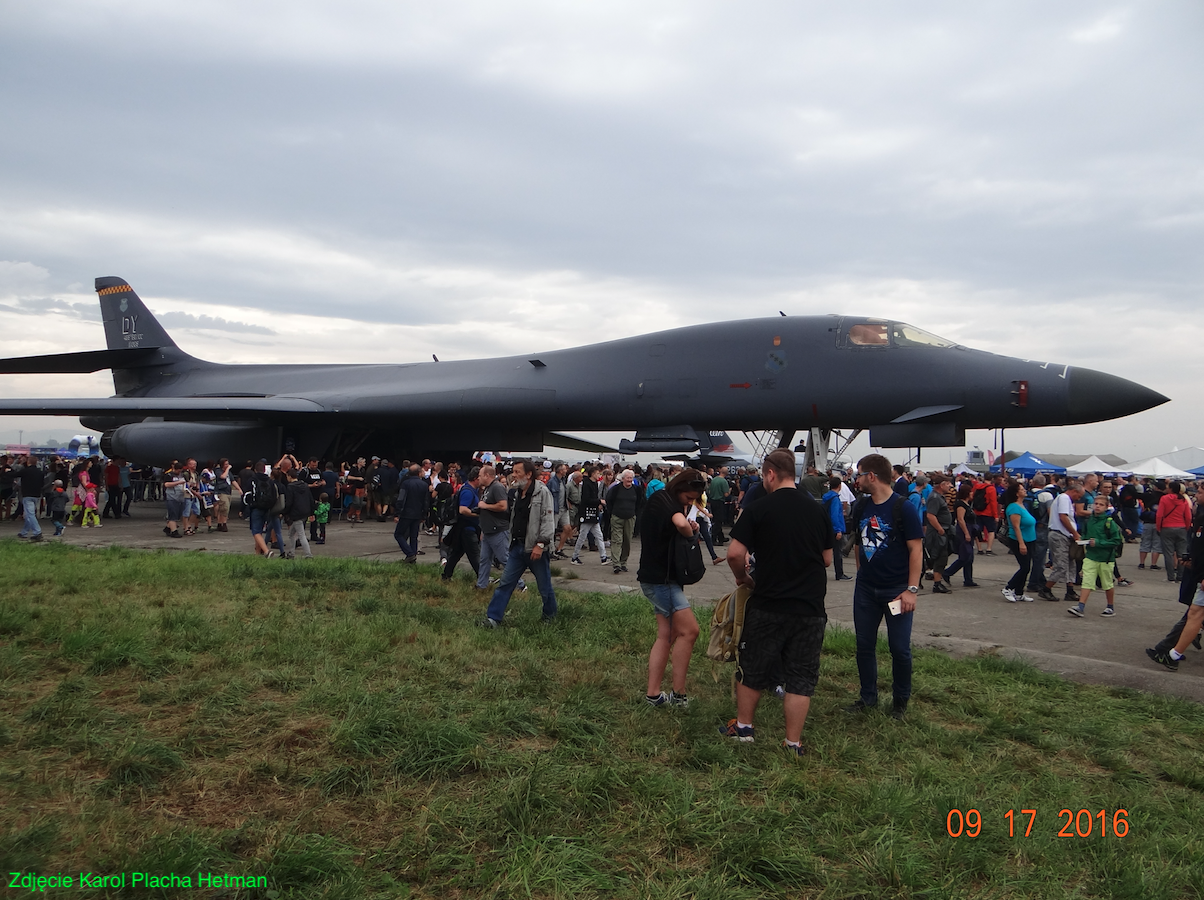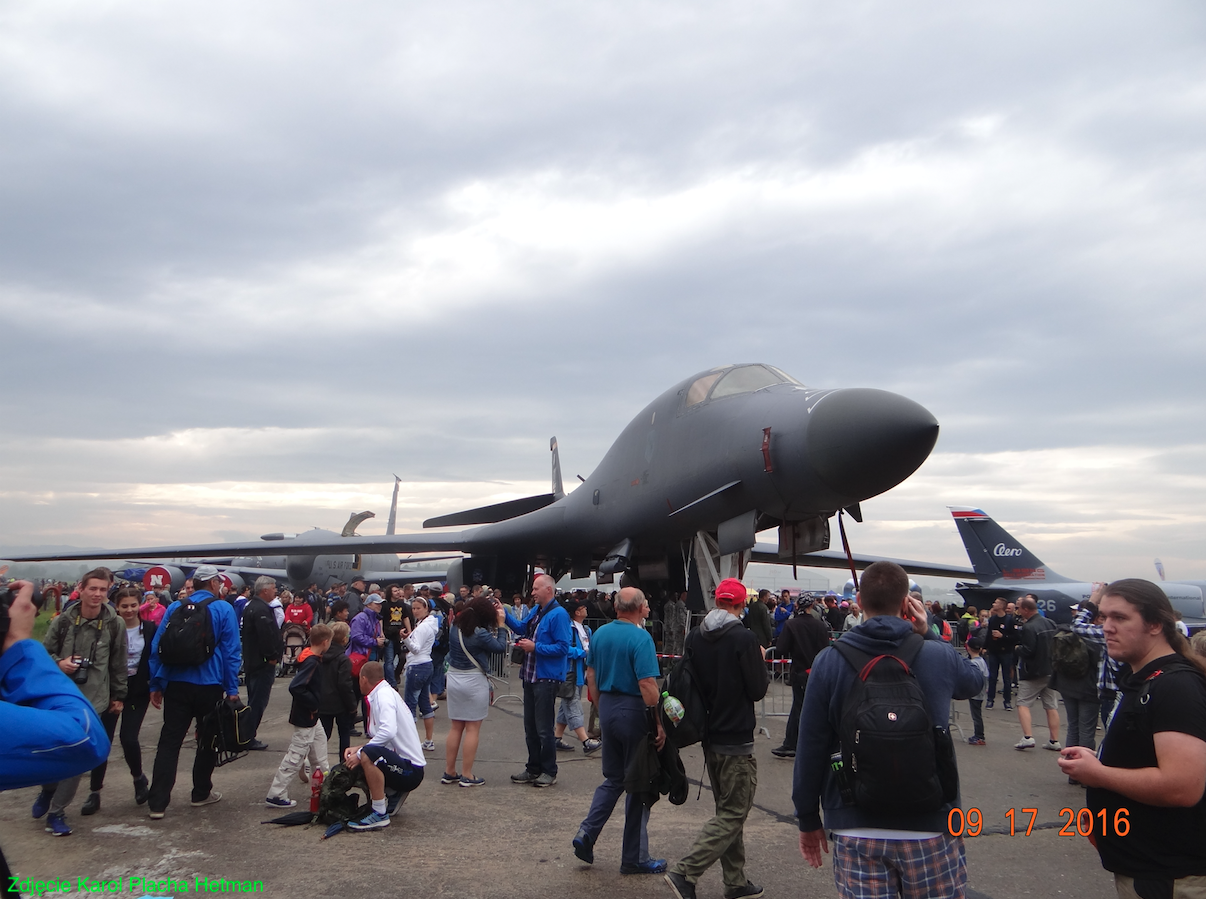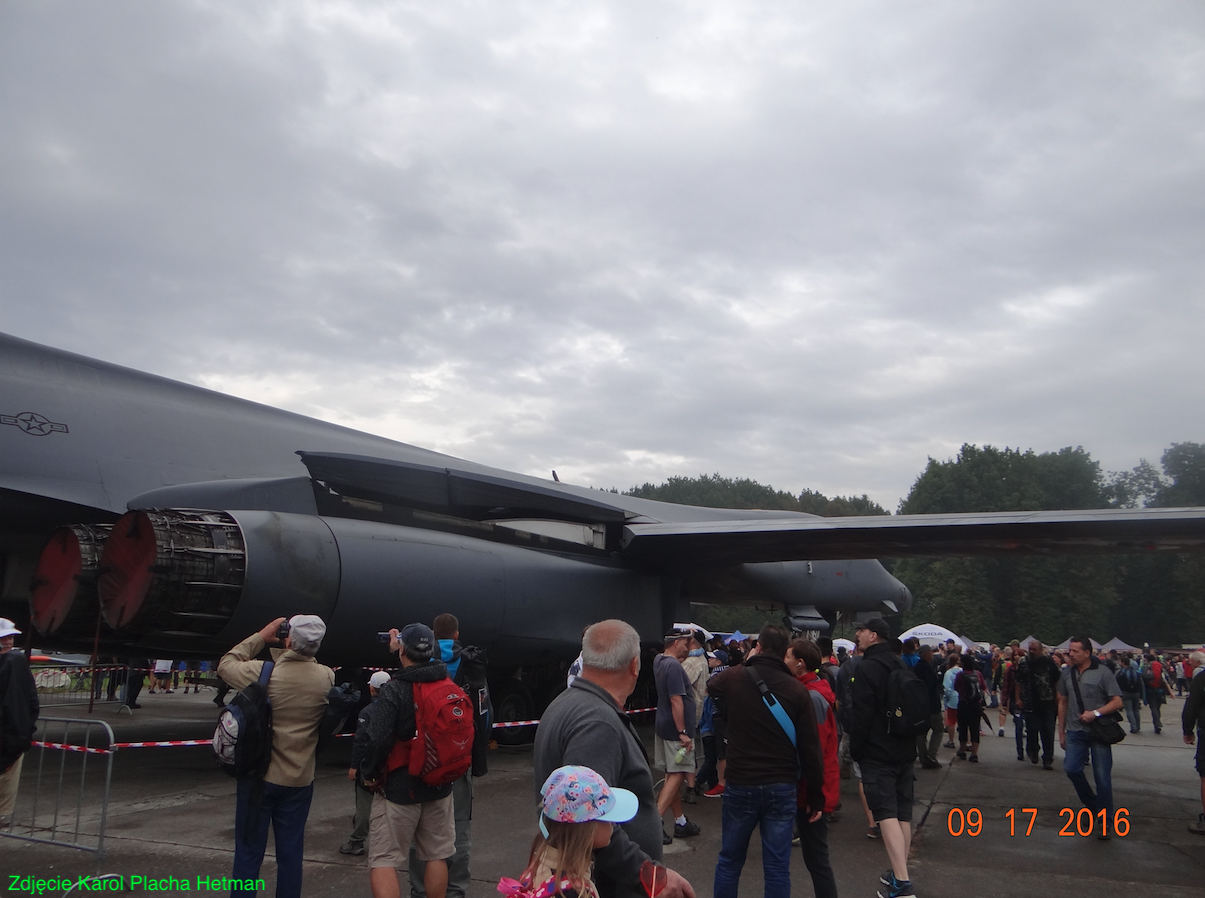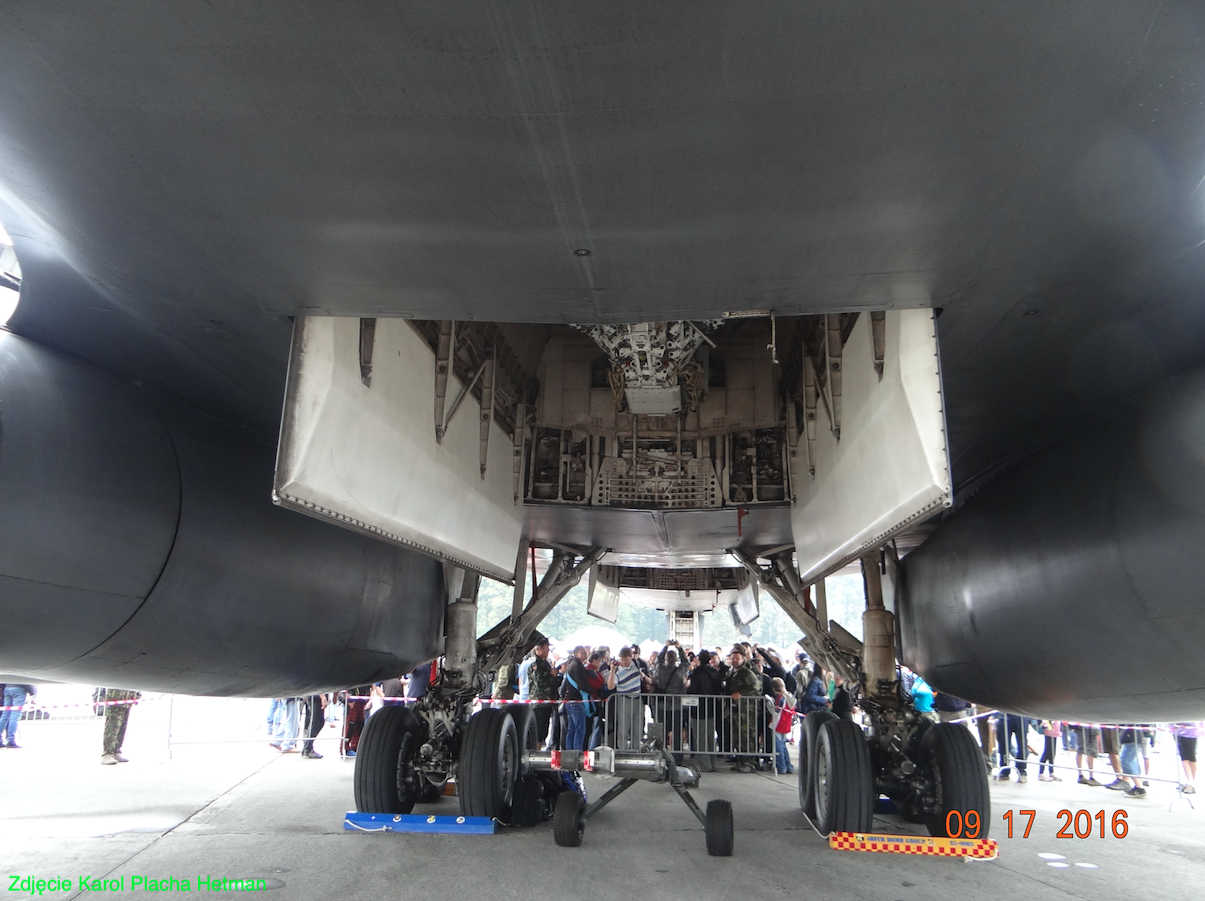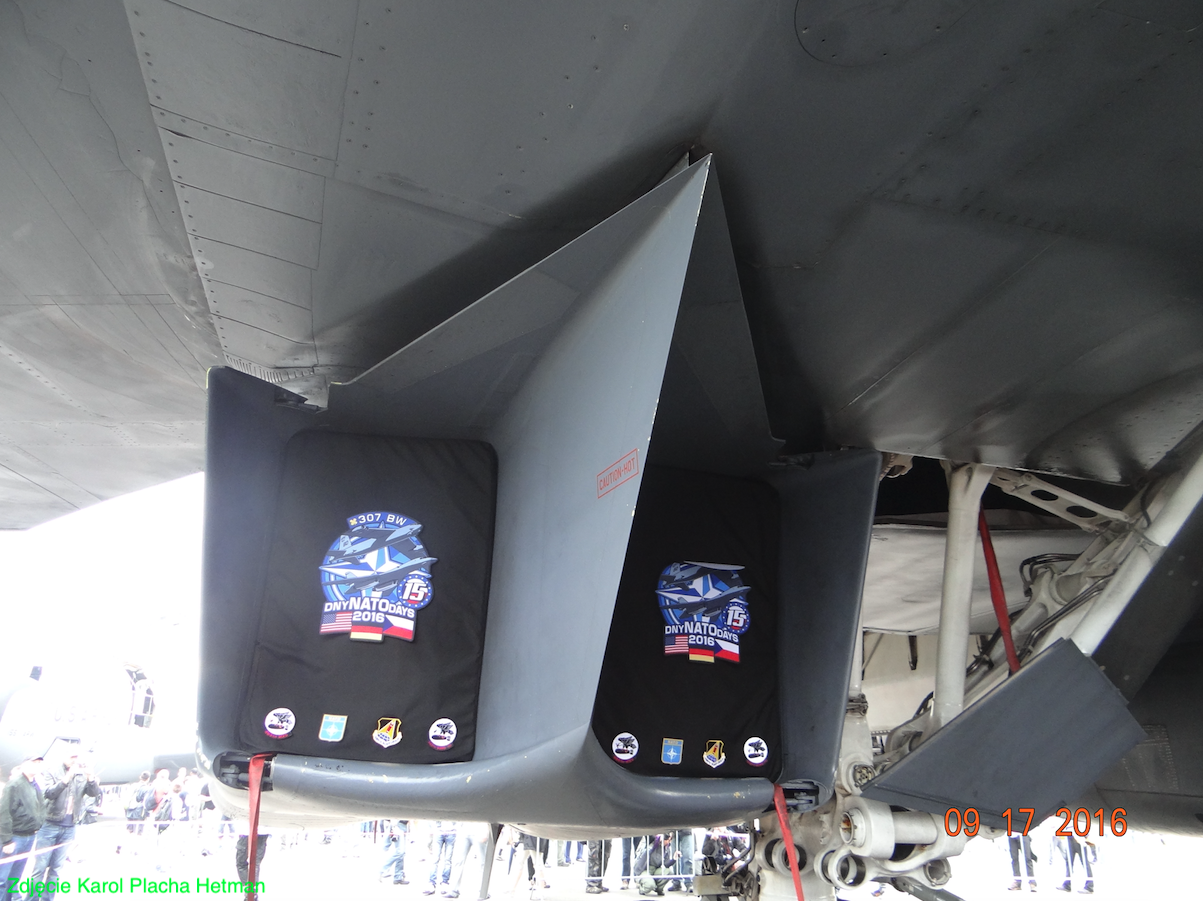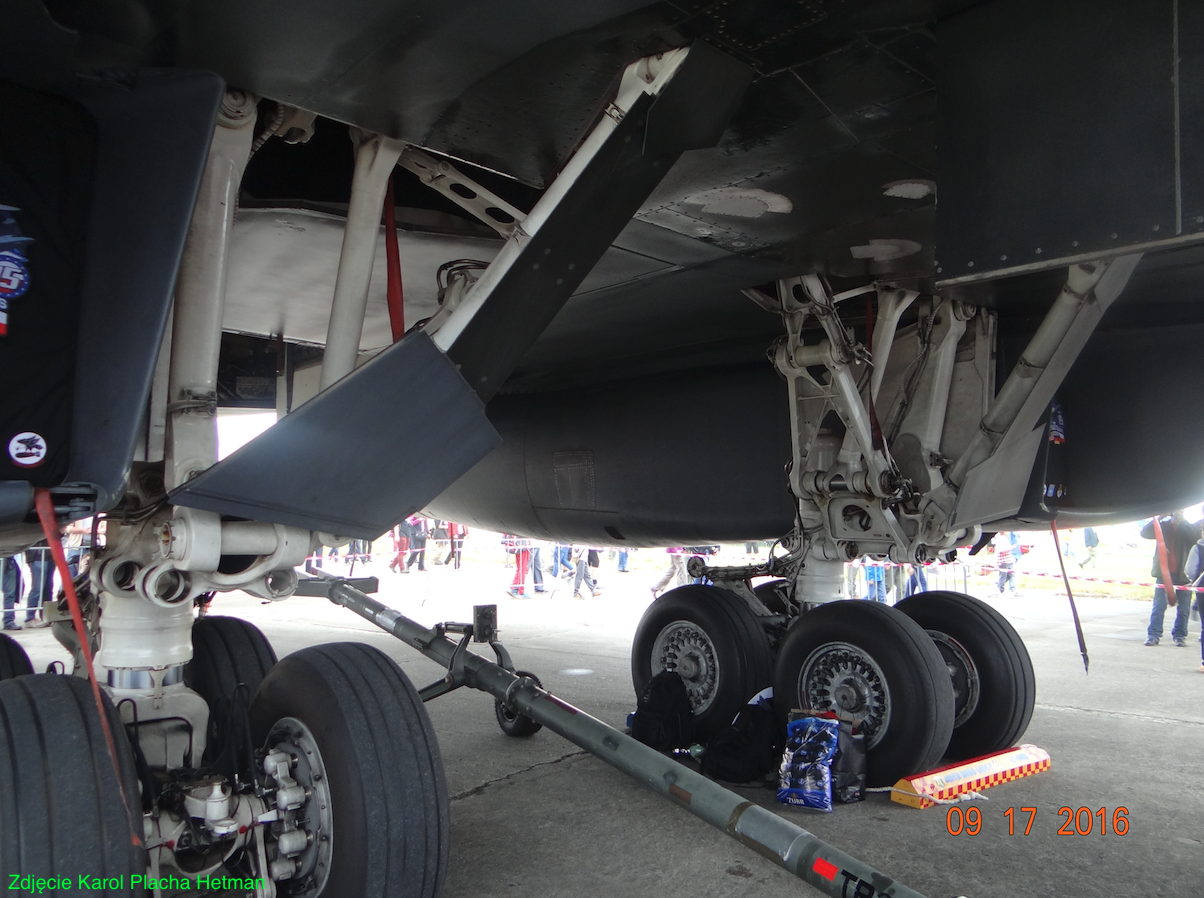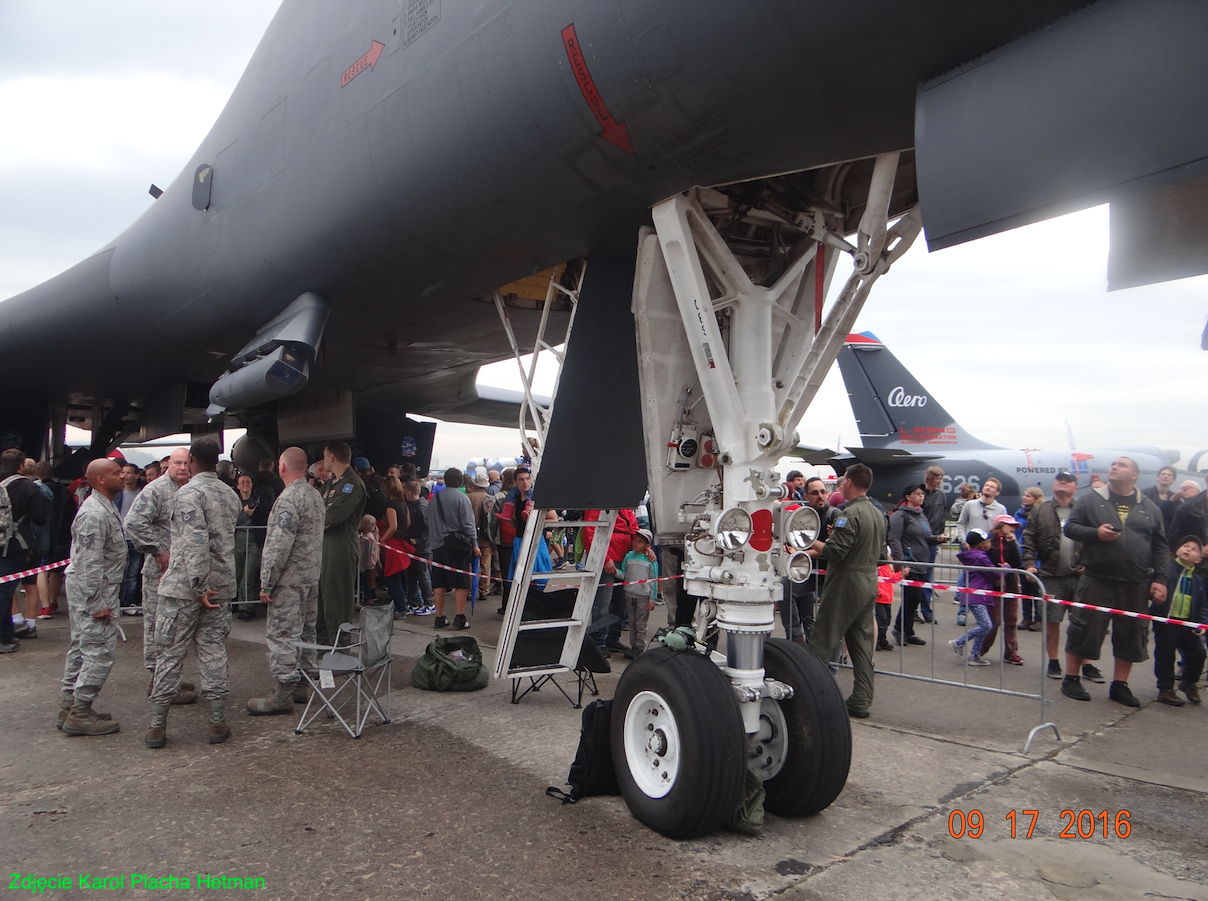Warszawa 2023-03-28
American Rockwell B-1 Lancer bomber.
The Rockwell B-1 Lancer is an American intercontinental precision strike heavy bomber. The aircraft made its first flight on December 23, 1974. It was commissioned on October 1, 1986. 104 examples were built. Rockwell B-1 Lancer is a bomber with variable wing geometry. The aircraft are operated by the USAF. The B-1B is one of three strategic bombers serving in the USAF fleet, along with the B-2 Spirit bomber and the B-52 Stratofortress bomber. B-1B aircraft are an important deterrent to the aggressive policy of the Moscow state.
The design of the B-1 aircraft was created in the 1960s as an attempt to combine the speed of the Ma-2 (B-58 Hustler) and high payload (B-52 Stratofortress). After a long series of studies, Rockwell International (now part of Boeing) won the competition for the design of the B-1A aircraft. The aircraft was characterized by a speed of Ma-2.2 at high altitude and a speed of Ma-0.85 at an altitude of 30 – 100 m. The B-1A aircraft was flown on December 23, 1974. During this time, there was a rapprochement in US-CCCP relations, culminating in the joint space flight of SOJUZ – APOLLO. There were also disarmament talks. Therefore, in 1977, the B-1A program was suspended after four prototypes had been built.
The armed attack of the CCCP on Afghanistan verified the US policy towards the Moscow state. As a result, in 1981, work on the B-1 and B-2 bombers was resumed. The design of the B-1A has been changed. The maximum speed requirement has been reduced to Ma-1.3 at high altitude and Ma-0.96 at low altitude. The aircraft’s capacity has been increased. Operational capabilities have been improved by installing modern electronics. The aerodynamics and structural solutions of the airframe were improved. The plane now takes more fuel and more weapons weight. Bomb bays were redesigned. Now there are three chambers; two in front of the center wing and one behind the center wing.
The new B-1B aircraft was flown in 1986 and a contract was signed to build 100 aircraft for the USAF. The contract was fully performed. The last aircraft was delivered in 1988. After the dissolution of the SAC troops, the B-1B aircraft were adapted to the role of conventional bomber aircraft. Soon, however, planes were adapted to carry cruise missiles. The first combat use of B-1B aircraft occurred during Operation Desert Fox in 1998. In 2020, there were 45 B-1B aircraft in stock in the USAF. The expected service life of the aircraft is 2035.
B-1B design.
The B-1B aircraft received a very modern airframe, which has wings with variable geometry and a carrier-type fuselage. The aircraft is powered by four turbofan engines, which are placed under the center wing, in two nacelles. The wings are tilted from 15 degrees to 67.5 degrees. The rotation time of the wings is 15 seconds. Leaf profile NACA69-190-2. The wing-forward setting is used for take-offs, landings and economical high-altitude flights. The wing-back setting is used for subsonic and supersonic flight. To counter turbulence at low altitudes, small triangular control surfaces were used near the nose of the aircraft.
Unlike the B-1A aircraft, the B-1B aircraft cannot reach Ma-2 speeds. Its maximum speed is Ma-1.25 (about 950 mph or 1,530 km/h at high altitude). But its low-end speed is up to Ma-0.92 (700 mph, 1,130 km/h). Due to the possibility of damage to the air intakes and engines, low-altitude flights and training flights are not performed at maximum speeds. The air ducts in front of the motors run in an "S" shape to prevent radar echoes from being reflected off the fan blades.
The B-1A engine was slightly modified to produce the GE F101-102 for the B-1B, with an emphasis on durability and increased efficiency. The engine core was subsequently used in several other engines, including the GE F110 used in the F-14 Tomcat, F-15 K/SG and later versions of the General Dynamics F-16 Fighting Falcon aircraft. It is also the basis for the GE F118 engine used in the B-2 Spirit and U-2S, but without the afterburner system. The F101 engine core is also used in the CFM56 civil engine. Powerplant 4 × General Electric F101-GE-102 afterburner turbofan engines, 17,390 lbf (77.4 kN) thrust each dry, 30,780 lbf (136.9 kN) with afterburner.
The aircraft was equipped with an APU auxiliary unit. This engine can be started as soon as the pilots are boarding, which reduces take-off time.
The main computer in the B-1 aircraft is the IBM AP-101, which was also used in the space shuttles and is used in the B-52 bomber. The aircraft was fitted with a Westinghouse (now Northrop Grumman) AN/APQ-164 radar with electronic beam control. In 1995, the Global Positioning System (GPS) system was added to the avionics. The B-1B’s defense electronics include the Eaton AN/ALQ-161A warning radar and defensive jammer.
The crew consists of 4 airmen; aircraft commander, pilot, offensive systems officer and defense systems officer. The pilots sit in one cockpit; pilots in front, equipment officers in the rear. Each flier has an individual ejection seat that is fired upwards when the hatch above the flier’s head is thrown back. There was no rescue system as in the B-1A and F-111 aircraft.
Data T-T B-1B:
Span 137 ft (42 m) – 79 ft (24 m) swept. Length 146 ft (45 m). Height 34 ft (10 m). Bearing area 1,950 sq ft (181 m2). Curb weight 192,000 lb (87,090 kg). Takeoff weight 326,000 lb (147,871 kg). Maximum weight 477,000 lb (216,364 kg). Top speed 721 kn (830 mph, 1.335 km/h) at 40,000 ft (12,000 m), 608 kn (1.126 km/h) at 200–500 ft (61–152 m). Maximum speed Ma-1.25. Range 5,100 nmi (5,900 mi, 9,400 km). Combat range 2.993 nmi (3.444 mi, 5.543 km). Operating ceiling 60,000 ft (18,000 m). Weapon weight 50,000 pounds (23,000 kg).
Written by Karol Placha Hetman

